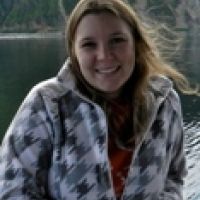Hayes & Mount, 2018
Teaching near-surface geophysics in the critical zone: examples from a field-based multi-method jigsaw (Invited)
Hayes, J., Mount, G.J. (2018)
Abstract ED51H-0655 presented at 2018 AGU Fall Meeting, Washington, D.C., 10-14 Dec
-
Shale Hills, Sierra, INVESTIGATOR, COLLABORATOR
-
Shale Hills, INVESTIGATOR, COLLABORATOR
Abstract
Critical zone (CZ) science aims to help explain the complex series of interactions at the nexus between rock, water, soil, atmosphere, and water. The multi-disciplinary approach to a diversity of questions as well as the emphasis on societally relevant issues such as land use, water availability, and climate change make the CZ an appealing topic for many students. Near-surface geophysical techniques have been employed in numerous recent applications to characterize CZ structure, monitor processes, and help provide a link between temporal and spatial scales. Therefore the CZ provides a natural platform for students to learn near-surface geophysical techniques and engage with meaningful scientific surveys. A two-day joint field trip was conducted between near-surface geophysics classes simultaneously taught at Dickinson College and Indiana University of Pennsylvania at the Susquehanna Shale Hills Critical Zone Observatory located in central Pennsylvania. Students were introduced to the critical zone with a tour of the observatory on the first day. The following day students were tasked with designing surveys and collecting coincident datasets using multiple methods (i.e. seismic refraction, electrical resistivity, magnetics, and ground penetrating radar). After the field trip, we used a “jigsaw” activity to help students integrate and synthesize datasets. Students were assigned to data processing teams where each team focused on processing data and generating images from a specific method. Processing teams were then divided, and new interpretation teams were pieced together to include representation from each method. Interpretation teams integrated and synthesized results culminating in a class presentation and discussions on the interactions between geology, hydrology, ecology, and anthropogenic land-use in the CZ. Informal assessment of this experience revealed that students were inspired to learn and gained confidence in their understanding of near-surface geophysics through the participatory nature and active learning techniques employed.
Citation
Hayes, J., Mount, G.J. (2018): Teaching near-surface geophysics in the critical zone: examples from a field-based multi-method jigsaw (Invited). Abstract ED51H-0655 presented at 2018 AGU Fall Meeting, Washington, D.C., 10-14 Dec.
Explore Further


